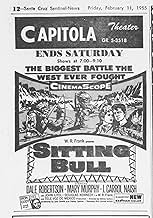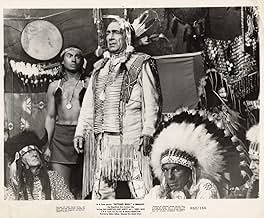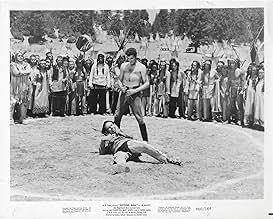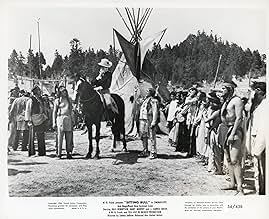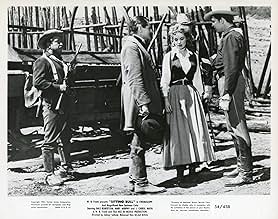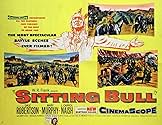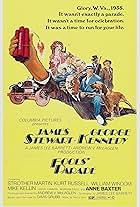Füge eine Handlung in deiner Sprache hinzuA cavalry officer sympathetic to the wronged Sioux fixes a meeting between Chief Sitting Bull and President Grant but a dishonest Indian Agent and a hateful General Custer test the Sioux's p... Alles lesenA cavalry officer sympathetic to the wronged Sioux fixes a meeting between Chief Sitting Bull and President Grant but a dishonest Indian Agent and a hateful General Custer test the Sioux's patience, threatening to derail the peace-talks.A cavalry officer sympathetic to the wronged Sioux fixes a meeting between Chief Sitting Bull and President Grant but a dishonest Indian Agent and a hateful General Custer test the Sioux's patience, threatening to derail the peace-talks.
- Regie
- Drehbuch
- Hauptbesetzung
- Charles Wentworth
- (as Bill Hopper)
- Webber - Indian Agent
- (as Tom Brown Henry)
- White Cloud
- (Nicht genannt)
- Trooper Foster
- (Nicht genannt)
- Young Buffalo
- (Nicht genannt)
- Trooper
- (Nicht genannt)
- Capt. Swain
- (Nicht genannt)
Empfohlene Bewertungen
There's a traditional romance thrown into the mix, between a General's daughter (MARY MURPHY) and Robertson, with rival suitor WILLIAM HOPPER as another man interested in Murphy. J. CARROL NAISH is Chief Sitting Bull, who wants peace and refuses to put on his war paint although some members of his tribe are anxious to fight some of the white men's injustices. DOUGLAS KENNEDY is flamboyant and seriously miscast as the yellow-haired General Custer of the 7th Cavalry.
It's handsomely produced in outdoor settings that look authentic, but the stilted dialog is handled indifferently by a lackluster cast of players. DALE ROBERTSON gives a leaden performance in the major role and he doesn't get much help from WILLIAM HOPPER or MARY MURPHY, who in real life, married Robertson after this film. Their chemistry on film fails to register and her motivations throughout are sketchy, to say the least.
A major plot development has President Grant helping Robertson when he is condemned for helping Chief Sitting Bull and there are a few other subplots before we get to the battle at Little Big Horn. Robertson's compassion for the redskins almost lands him in big trouble toward the end, until Chief Sitting Bull intercedes just before he's about to be executed for treason by a firing squad.
Good western should have been much better but is marred by dull performances and uninspired direction of Sidney Salkow. The director unwisely allowed few close-ups of his cast throughout the film, depending solely on medium shots for most of the scenes, probably because he was new at the CinemaScope process. Since most of the cast underacts considerably, this is a real drawback in the more intimate moments.
But the "Bottom-Line" is that Most Movies are Made as Entertainment with a Profit Motive.
So Historical "Facts" Aside, as an Entertaining Piece of an Early Cinemascope Film (the first Independent) In the First-Half of the "Decade of the Western",
You Could Do Much Worse than this Nobly Intended Movie about the Sioux Chief "Sitting Bull",
His Constant Battles with "Forked-Tongue" Treaties and the General Inhumane Treatment of Prisoners,
Leading Up to the "Battle of Little Big-Horn" and Custer's Last Stand.
Playing Fast and Loose with some "Facts" is a Consideration to Make the Movie Box-Office Friendly.
But the Film Deserves Credit for Bucking the Trend of "White-Man Wins Called Victory...Indian Wins Called a Massacre" and Taking a Liberal Other-Sided Approach.
In the End it is Not Guilty of Over-Indulging the Re-Writing of History and Shows Respectable Behavior on Both Sides.
The Casting is Weak but the Story and the Epic Battles are Well Staged, Engaging, and Somewhat Informative.
All Things Considered...A Fine Film and Definitely...
Worth a Watch.
This B film from MGM is yet another version of the events of surrounding the Little Big Horn battle where Douglas Kennedy as Custer got himself surrounded and massacred by some angry Sioux Indians. This version does show the Indian side of the events, how badly treated they were on reservations, how the whites once word of gold being discovered in their sacred Black Hills of Dakota territory systematically broke the treaties signed. Yet in fact the film went a bit overboard with presenting the Indian side and took great liberty with the facts.
Dale Robertson's an army major who zealously follows his orders about respecting the Indian rights, to the dismay of former General now Colonel George Armstrong Custer. Robertson's maverick tendencies wouldn't be liked in the army in any event, but his fiancé Mary Murphy who is General John Litel's daughter wants an upwardly mobile career man and Robertson doesn't look like a good bet. For standing on his beliefs Robertson loses her to newspaper reporter William Hopper.
But Dale gets himself in an even bigger jackpot. He's got an agreement with his former commander Ulysses S. Grant who is now president of the United States, the big chief of all the white folks. But when Custer moves prematurely and gets massacred and troops are sent on reprisal, Robertson does a very daring and potentially foolish thing to keep the peace process alive. That's the essence of our story.
Which of course never did happen. Neither did Ulysses S. Grant as played by John Hamilton on hiatus from the Superman series ever come west to negotiate with J. Carrol Naish as Sitting Bull. That's the biggest flaw in this film.
Murphy's character doesn't ring true either. From a woman who makes no bones about her desire for an upwardly mobile man, she does an about face and would make Tammy Wynette proud if Tammy had in fact ever seen Sitting Bull.
The film's heart is the in the right place, but the rest of it is out to lunch.
Though I will say one thing. If what I read is true about Mary Murphy's bout with Montezuma's revenge on location for this movie, she may have given one of the great performances of all time just getting through this film without a hint on screen.
Handlung
WUSSTEST DU SCHON:
- WissenswertesThe film was shot outside of Mexico City, and star Mary Murphy caught "Montezuma's Revenge" and was very ill throughout the six-week shoot. Most of her scenes are relatively brief, possibly because of this.
- PatzerIn many of the scenes the women are obviously men.
- Zitate
Sitting Bull: I have wanted peace. I have prayed for peace. There have been battles. But when the white soldiers win a battle, they call it victory. When the Indians win, they call it massacre.
- Crazy CreditsDuring the opening titles, the film's 'Technical Advisor and Indian Costumes' is credited to 'Iron Eyes Cody' who is also parenthetically credited as being a '(Famous T.V. Star)'.
- VerbindungenFeatured in Entscheidung am Big Horn (1965)
- SoundtracksGreat Spirit
Music and Lyrics by Max Rich
Top-Auswahl
- How long is Sitting Bull?Powered by Alexa
Details
Box Office
- Bruttoertrag in den USA und Kanada
- 1.500.000 $
- Laufzeit1 Stunde 45 Minuten
- Sound-Mix
- Seitenverhältnis
- 2.55 : 1
Zu dieser Seite beitragen



